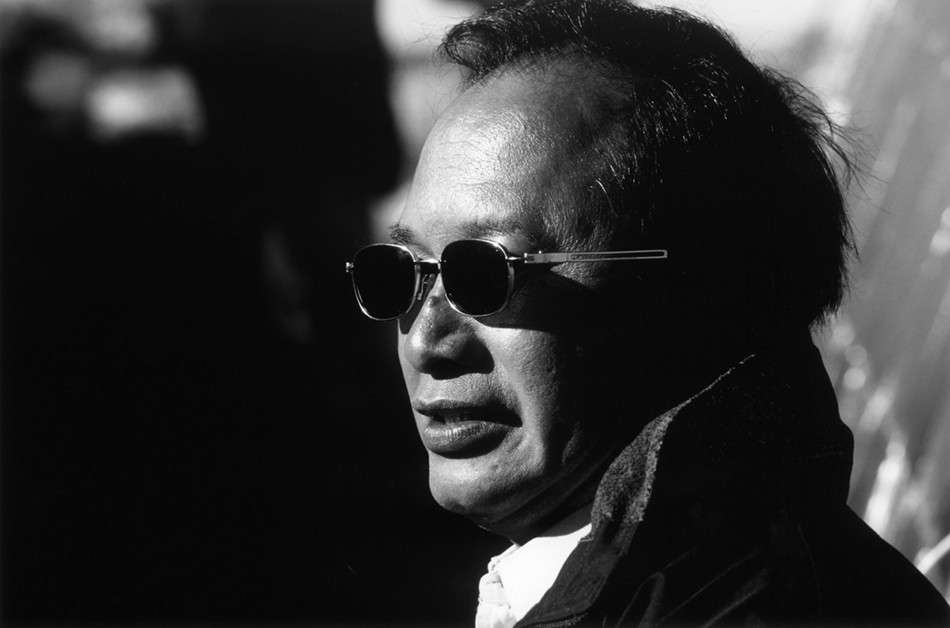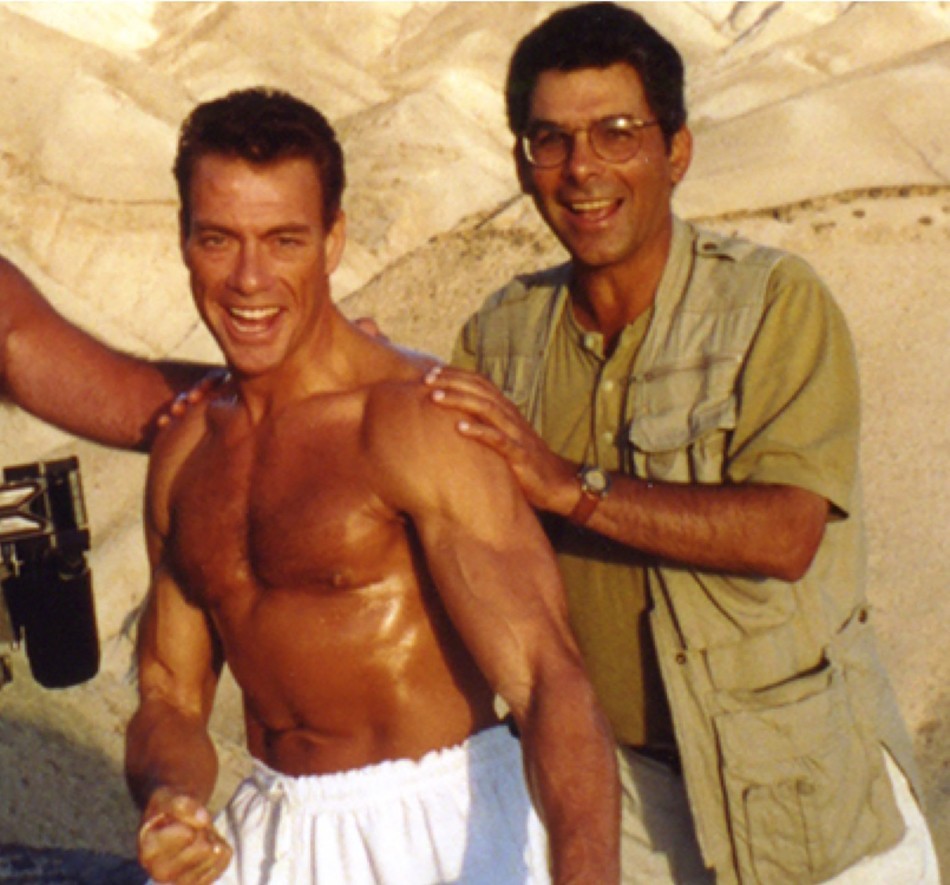Breaking down three of John Woo’s ultimate action classics…

A broken man, clutching a Beretta at his side, stumbles into an abandoned church. A few strands of hazy light pierce through the remaining pains of shattered stained glass. The only sign of life is a startled flock of birds that flutter away as the approaching figure stumbles down the aisle. A shadow appears in the corner of the sanctuary. The silence explodes into a flurry of concussive gun shots, which forces the hapless wretch to dive for cover in between the splintering oaken pews.
John Woo, Hong Kong’s auteur of ultimate action, blends captivating imagery like this with intense violence and complex yet endearing characters. He was destined to make his way to Hollywood after the rise and commercial success of 80’s and 90’s mega-action blockbusters. If American directors wielded a sledgehammer to transform the genre, Woo used a planer to shape and refine it into a work of art. The first three movies he made stateside demonstrated elements of his unique style while preserving the kickass attitude and high-octane energy that we red-blooded Americans came to expect and demand.
Why John Woo’s ‘Hard Boiled’ is Pure Modern Action Perfection
Hard Target (1993)

John Woo’s directorial debut in America takes us down to the sultry underground of the Big Easy. Hard Target features Jean-Claude Van Damme sporting one of the most greasily glorious mullets in cinematic history. The plot, which seems like an episode of Walker, Texas Ranger but isn’t, involves a criminal network kidnapping homeless people to act as human prey for degenerate hunters seeking to up their game. Arnold Vosloo, in his pre-Mummy days, is the evil entrepreneur and Lance Henriksen, supporting actor legend, is his lieutenant and chief enforcer. Yancy Butler is the catalyst for the story and serves as an occasional damsel-in-distress/love interest.
The movie feels more like a standard Van Damme vehicle save a few filmmaking flourishes of Woo’s styling. The narrative is about as shallow as an inland bayou and the characters are rather one dimensional. Still, the performances themselves are pretty solid, especially Vosloo’s and Henriksen’s over-the-top viciousness. Wilford Brimley as the drunk, swamp-dwelling uncle is also entertaining to watch. Basically, you’re getting a whole lot of gunfights, high-kicks, and explosions with various Cajun-inspired set pieces.
Ultimate Action Greatness: a motorcycle-surfing Van Damme playing chicken with a truck-full of rent-a-thugs firing machine guns. I don’t think I need to tell you who comes out on top and who explodes into a fireball of twisted metal.
Most Woo-worthy Moment: the entire gunfight in the Mardi Gras factory qualifies but two sequences stand out as signature John Woo. Wielding two pistols, of course, Van Damme crosses paths with an airborne grenade as he leaps through a window, the grenade explodes, JC flips around on the ground propelling himself on his back while firing all of his rounds into Arnold Vosloo. Tied with that amazing bit of choreography is the final standoff with Lance Henricksen. As the factory is engulfed in flames, a pistol-less Van Damme makes his first move against an armed Henricksen by taking a huge, slo-mo flying kick to his chest as doves fly away in the background. Hunting season is over, indeed.
Broken Arrow (1996)

Woo’s sophomore entry in his American filmography introduces us to John Travolta as the scene-devouring villain, although it’s the weakest of the three films in general. Christian Slater is there too and occasionally shoots at and/or punches him. In the mid-90’s Travolta shed his charming, leading-man image and chose grittier roles such as Vincent Vega in Pulp Fiction. It seems like he had a ton more fun as the bad guy based on his performances in both Broken Arrow and Face/Off.
Woo seemed all too willing to let Travolta ham it up in between occasional gunfights, chase sequences, and train-hopping fist fights. Oh, and there is a ticking clock attached to a nuclear warhead to keep things moving along during the slower parts. Christian Slater as the good guy doesn’t give us much to work with and Travolta’s character as the villain is much more endearing. Southern Utah provides some stunning backdrops to the slow-burn action.
Ultimate Action Greatness: a freakin’ underground nuclear explosion followed by Travolta admitting that he is indeed “the man.” Either that or Samantha Mathis taking out an overly confident thug with a precisely thrown claw hammer.
Most Woo-worthy Moment: the final showdown in the train car with the nuclear bomb. It’s a tight space and starts with a gunfight and ends with a knock-down, dragged-out fistfight with an inert nuclear weapon dealing the fatal coup-de-gras.
Face/Off (1997)

This is the third and highest grossing film of this notional triple-feature boxset and it’s Woo’s second most successful feature of all time after Mission Impossible II (2000). Face/Off is also the John Woo-iest movie he made in the US. There are plenty choreographed chases followed by gun fights but he was able to slow it down a bit and spend more time with the characters. Complex human relationships and the development of individual characters sneak their way into a compelling narrative to give Face/Off more depth and resonance. In fact, I’m willing to bet Nicolas Cage’s remaining sanity that more people remember and re-watch Face/Off than any of Woo’s other US features due to the masterful balance of story and ‘splosions.
Fear not, the level of action is intense and it keeps building over two hours before erupting into the ultimate showdown. After an extreme boat chase and protracted struggle for the fateful harpoon, You’re left exhausted at the end or at least feel like you’ve eaten an entire birthday cake by yourself.
Ultimate Action Greatness: Arguably the most ultimate boat chase ever filmed is a five minute sequence of top-notch stunt work, glorious explosions, and impressive outboard maneuvering. Also, who knew a MP-5 on full auto could be so accurate firing from a boat throttled up to top speed?
Most Woo-worthy Moment: Yes, there is a Mexican standoff in an empty church with pigeons flying about, but an even more Woo-worthy moment happens during the Castor Troy penthouse raid. Castor’s son is caught in the middle and Castor’s baby-mama does her best to shield him from the hail of bullets and attempts to distract the boy by slapping a pair of headphones on him. At one point, we see the battle through the child’s perspective as “Somewhere Over the Rainbow” drowns out the chaos and death.
As previously mentioned, Woo would go on to direct Mission Impossible II, which marked the high point of his career. After that, he fell off the summit with Windtalkers (2002), rolled down the hill with Paycheck (2003), and then boarded a plane back to China. He may be re-making The Killer at some point; so, we’ll see. It would be refreshing to see the King of Asian Action climb back into his throne and grace Hollywood with his presence for a project or two before abdicating. Regardless of what the future holds, John Woo’s distinctive stamp on action movies, both in the US and abroad, is still seen today. Whenever someone busts out two pistols or a flock of birds is scattered by gunfire, you’re probably looking at an homage to an ultimate action legend.
Article by Mike Culton – An action aficiondo who grew up on a steady stream of 80s and 90s action movies. He drunkenly tweets movie reviews on Fridays @BuzzedMovies on Twitter and produces a series of movie reviews on films that were shot in Idaho on YouTube.
What are your thoughts on these John Woo action classics? Let us know in the comments!









